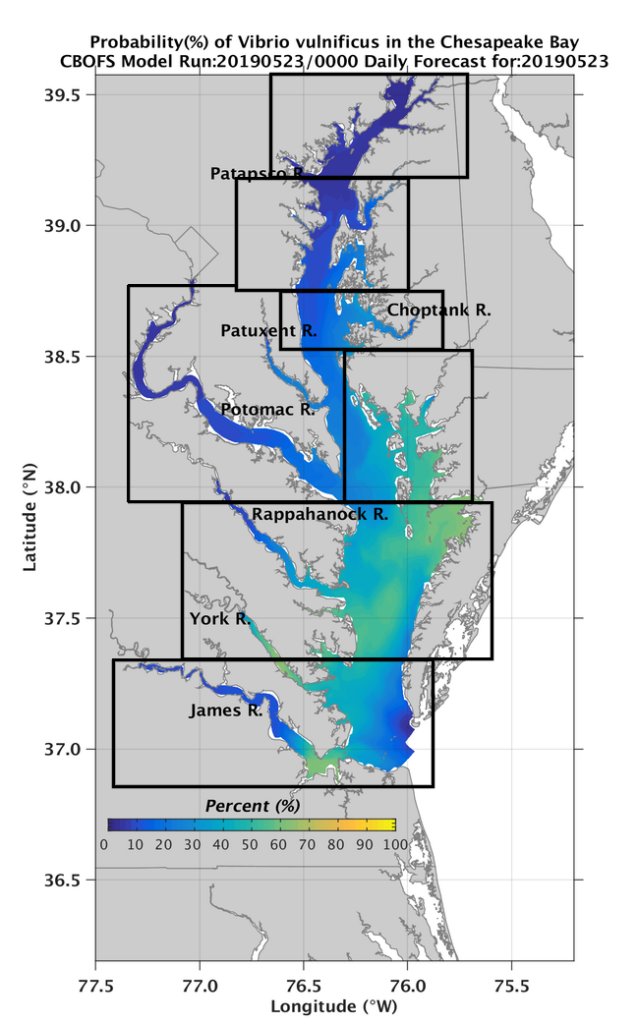
A new NOAA forecast shows public health officials in Maryland and Virginia when and where the pathogenic Vibrio vulnificus bacteria is most likely to be found in Chesapeake Bay. The forecast will provide up to a two-day early warning of high Vibrio concentrations, ensuring safe recreation in bay waters.
NCCOS led development of the model used to generate the forecast, which NOAA’s Center for Operational Oceanographic Products and Services helped become operational in November 2018. The operational forecast is available at nowcoast.noaa.gov, under Ecological Forecasts. For more information about NCCOS’s Vibrio model and to sign up for related updates and notifications via email, visit NCCOS’s Vibrio Predictive Models webpage.
In the U.S., people most often become infected with Vibrio vulnificus and other species of Vibrio by eating raw or undercooked shellfish, particularly oysters. Certain Vibrio species, including Vibrio vulnificus, can also cause a skin infection when an open wound is exposed to brackish or salt water.
As Chesapeake Bay waters warm, Vibrio vulnificus pathogens become more prevalent. The new NOAA forecast will let public health officials know when and where people are most likely to encounter Vibrio pathogens in Chesapeake Bay, enabling state officials to educate the public and reduce the risk of Vibrio infections by taking appropriate measures.
